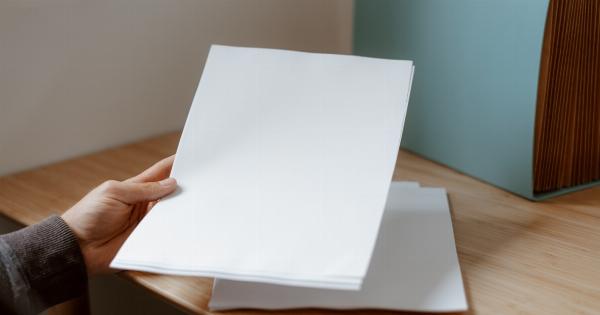Your bed is the place where you spend a significant amount of time each day, and it should be a clean and comfortable environment. One aspect of maintaining a healthy bed is regularly changing the bed linens.
But how often is too often? In this article, we will explore the importance of changing your bed linens regularly and provide recommendations on the frequency for doing so.
The Consequences of Not Changing Your Bed Linens
Not changing your bed linens can have negative effects on your health. Here are a few consequences of neglecting this important task:.
1. Accumulation of Dust Mites and Allergens
Bed linens can harbor dust mites, a common allergen that can cause symptoms such as sneezing, itching, and congestion for those with allergies or asthma.
Over time, these microscopic creatures multiply and their waste products can accumulate, leading to a potential increase in allergy symptoms.
2. Bacterial Growth and Odor
Your body sheds dead skin cells, sweat, and oils while you sleep. If you do not regularly change your bed linens, these substances can accumulate and provide an ideal breeding ground for bacteria.
This can result in unpleasant odors, an unappealing sleeping environment, and potentially even skin infections or acne breakouts.
3. Increased Risk of Bed Bugs
Bed bugs are tiny insects that feed on human blood. They can easily infest your bed linens if they are not changed regularly. Bed bug bites can cause itchy red welts and may lead to a skin infection if scratched excessively.
Infestations are difficult to eliminate and usually require professional intervention, so prevention is key.
How Often Should You Change Your Bed Linens?
The frequency of changing your bed linens depends on several factors, including personal preference, lifestyle, and individual health considerations. Here are some general guidelines to help you determine how often you should change your bed linens:.
1. Sheets
Sheets should ideally be changed every one to two weeks. If you sweat heavily at night, have oily skin, or suffer from allergies, it’s best to lean towards changing them every week.
Additionally, if you’ve been sick or have had visitors in your bed, changing your sheets immediately afterward is advisable.
2. Pillowcases
Pillowcases should be changed at least once a week, but changing them every three to four days is even better. Your face comes into direct contact with your pillowcase, and any oils, dirt, or bacteria from your skin can transfer onto the fabric.
Changing your pillowcase frequently helps to keep your skin clean and free from potential irritants.
3. Duvet Covers and Comforters
Duvet covers and comforters can often be washed less frequently than sheets or pillowcases, as they offer an additional layer of protection.
Aim to wash them every two to four weeks or as needed, especially if they become visibly soiled or if you spill something on them.
4. Mattress Protectors
Mattress protectors are essential for keeping your mattress clean and extending its lifespan. They should be washed every two to three months, or more frequently if necessary.
Mattresses can accumulate dust, sweat, dead skin cells, and even bodily fluids over time, so a mattress protector acts as a barrier against these substances.
5. Quilts and Blankets
Quilts and blankets, especially those used for decorative purposes, can be washed less frequently than other bedding items. If they are not in direct contact with your skin and do not become soiled, you can wash them every three to six months.
However, if you use them for warmth or have pets that sleep on your bed, washing them more often is recommended.
Conclusion
Regularly changing your bed linens is crucial for maintaining a clean and healthy sleeping environment. Dust mites, allergens, bacteria, and bed bugs can flourish in dirty bedding, leading to various health issues.
By following the recommendations outlined in this article, you can ensure that your bed remains a comfortable and hygienic space for restful sleep.




























